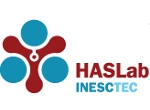Modelling information resources and their salience in medical device design
- Citation:
- Harrison M, Campos JC, Ruksenas R, Curzon P. 2016. Modelling information resources and their salience in medical device design. In Proceedings of the 8th ACM SIGCHI Symposium on Engineering Interactive Computing Systems, pages 194-203, copy at www.tinyurl.com/y5ohzymz
Abstract:
The paper describes a model that includes an explicit description of the information resources that are assumed to guide use, enabling a focus on properties of "plausible interactions". The information resources supported by an interactive system should be designed to encourage the correct use of the system. These resources signpost a user's interaction, helping to achieve desired goals. Analysing assumptions about information resource support is particularly relevant when a system is safety critical that is when interaction failure consequences could be dangerous, or walk-up-and-use where interaction failure may lead to reluctance to use with expensive consequences. The paper shows that expressing these resource constraints still provides a wider set of behaviours than would occur in practice. A resource may be more or less salient at a particular stage of the interaction and as a result potentially overlooked. For example, the resource may be accessible but not used because it does not seem relevant to the current goal. The paper describes how the resource framework can be augmented with additional information about the salience of the assumed resources. A medical device that is in common use in many hospitals is used as illustration.


